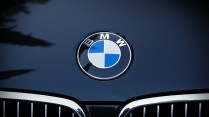GM's 2025 platform plan: Simplify and seek to save billions
By BEN KLAYMAN AND PAUL LIENERT
Oct 03, 2014 11:34 AM EDT

(Photo : REUTERS/SERGEI KARPUKHIN)
It could be a defining element of Chief Executive Mary Barra's legacy at General Motors Co (GM.N): A drastic shift over the next 10 years from 26 global vehicle production platforms to just four by 2025, a bold stroke that could eventually save the U.S. automaker many billions of dollars in production costs.
The radical streamlining of GM's basic architectures, announced on Wednesday at a day-long investor briefing near Detroit, is intended to simplify the engineering and manufacturing of GM's future cars and trucks, while enabling the company to deliver better-differentiated designs more quickly to customers around the world.
If it succeeds, then GM will be able to save on components, tooling and other manufacturing-related expenses.
However, to get there GM faces a challenge of enormous complexity that many of its global competitors, notably Volkswagen AG (VOWG_p.DE) and Toyota Motor Corp (7203.T), already have begun and are still sorting out. The up-front cost is also staggering.
Such a massive overhaul of the development and production processes is "incredibly disruptive, expensive and painful," said Morgan Stanley auto analyst Adam Jonas, and requires "a well-oiled machine, culturally, managerially and financially."
BASIC BUILDING BLOCKS
In fact, Barra, 52, began the process when she headed GM's global product development organization before succeeding Dan Akerson as CEO in January.
"It's something we've been working on for more than a couple years," she told reporters on Wednesday. "We've done extensive benchmarking (and) there's been tremendous progress made already."
Even the vocabulary is changing. Different companies use different terms - platform, architecture, toolkit - to describe the basic building blocks on which vehicles are based.
Joe Langley, principal analyst at research and consulting firm IHS Automotive, refers to the concept of "Lego-like component sets (that) redefine what the industry traditionally referred to as platforms."
Barra's 2025 strategy envisions GM developing four highly flexible and scalable "vehicle sets" to cover front-wheel drive vehicles, from the compact Chevrolet Volt to the full-size Impala; rear-wheel-drive vehicles, from the sporty Chevrolet Camaro to the luxury Cadillac CT6; crossover and sport utility vehicles, and trucks.
GM's vehicle-set concept employs some common components and structures, which will save engineering, purchasing and tooling costs, while allowing the automaker, at least in theory, to better tailor individual models to regional markets and specific sectors - a small crossover for China, say, that might share some basic parts, but not sheet metal, with a mid-size sedan for Europe.
VW's SOBERING EXAMPLE
The largest U.S. automaker is starting from well back in the pack. GM next year will build roughly 9 million vehicles on 26 vehicle platforms. In comparison, U.S. rival Ford Motor Co (F.N) expects to be building most of its vehicles on just nine platforms by the end of 2015.
But GM has no choice, said Morgan Stanley's Jonas: "You have to do it just to survive."
Some industry experts are skeptical of GM's ability to implement such a sweeping plan. Said a former GM executive: "You are not going to get from a large rear-wheel-drive Cadillac to a Volt, crossovers, large SUVs and full-size pickups with four architectures/platforms/component groups, call them what you will."
The competition, meanwhile, is racing toward even greater platform consolidation. According to IHS, three of these so-called mega-platforms - one each from VW, Toyota and the Renault-Nissan alliance - will account for roughly 20 million vehicles in 2020, or close to 20 percent of total global production.
But such transitions are rife with risk, as exemplified by VW's experience in implementing its so-called MQB "modular toolkit."
VW began mapping out its platform consolidation strategy in 2007, and put the first MQB-based small cars into production in 2012. At the time, Morgan Stanley estimated it would cost VW $70 billion to fully roll out MQB through the end of the decade, and projected gross annual savings of $19 billion by 2019.
The reality has been sobering. VW has run into technical and labor snags while adding new MQB variants at its home plant in Wolfsburg, indicating the execution continues to fall short of the theory.
The target, however, remains aggressive. By 2020, VW intends to build nearly 8 million MQB-based cars a year - some 47 different models - at its plants in Europe, China and the Americas, according to IHS.
STAYING IN THE GAME
While GM's vehicle set concept sounds relatively simple on paper, it involves variations of three different modules - the engine compartment, the passenger compartment and the cargo compartment - with provisions to change such specific hardware as engines and suspensions to match vehicle size and type, as well as market segment and geographic region.
It is "a pretty amazing transformation" of GM's processes, said Mark Reuss, who succeeded Barra in January as head of global product development. "This is the key to unlocking scale and (meeting) specific customer requirements around the world," he told investors on Wednesday.
Former GM executives who spoke with Reuters on condition of anonymity raised questions about the cost and competitiveness of the vehicle-set concept, but noted that Barra and Reuss have the technical background and "chops" to pull it off.
While the transition to the new processes could be expensive, once the systems are in place, the company may not exceed the current $15 billion it spends each year on engineering, R&D and capital equipment, said one former executive, adding: "Those bills are already pretty significant."
Another said Barra's new vehicle-set strategy "is basically about keeping GM in the ballgame. It's not going to put them ahead."
Analysts said it is too early to predict the impact on labor costs. Further, to avoid some of the issues encountered by VW, GM's global communication and coordination "will have to improve exponentially," said Bill Rinna, senior manager of forecasting at research firm LMC Automotive.
And while tearing up and retooling dozens of GM assembly plants could cost billions of dollars, "once done, the economies of scale will be massive - if everything works properly," he said.
Copyright @ MOTORTIMES, All rights reserved. Do not reproduce without permission.








